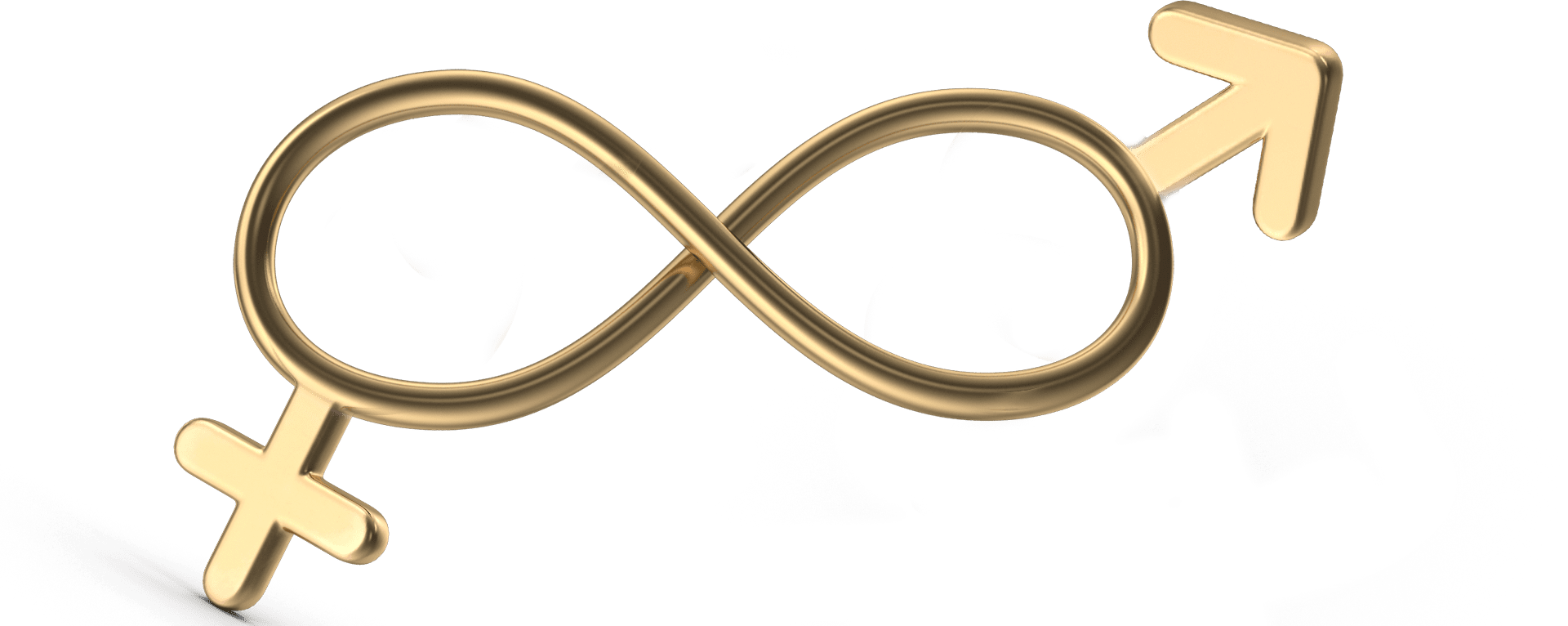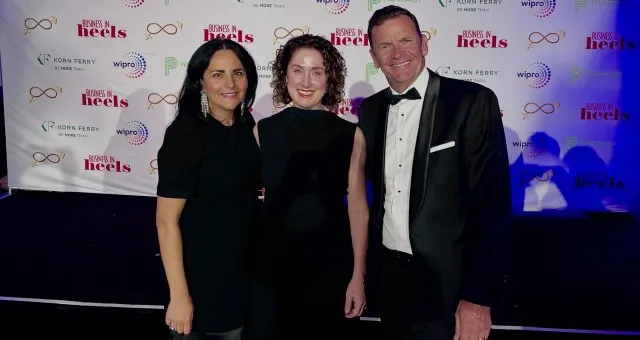

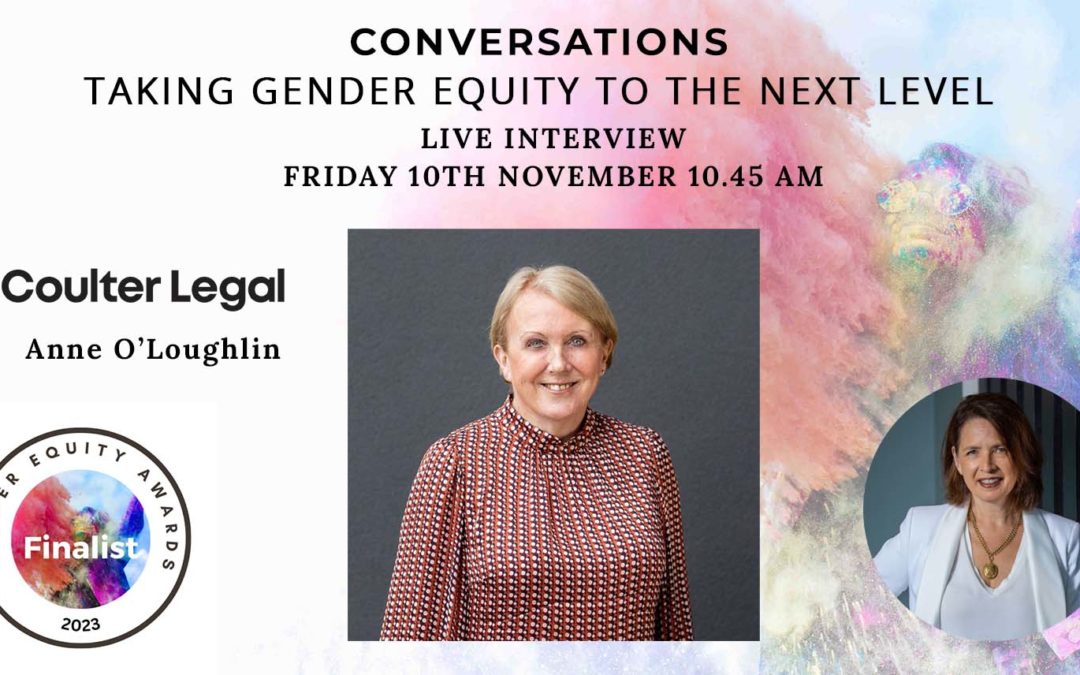
Taking Gender Equality to the Next Level
Meet Anne O’Loughlin, Managing Principal of Coulter Legal and winner of the SME category of Recalibrate: Gender Equity Awards for the second year in a row.
Anne shares with us some of what motivates her to be a driving force for change and she talks about the ground breaking initiatives they have implemented .
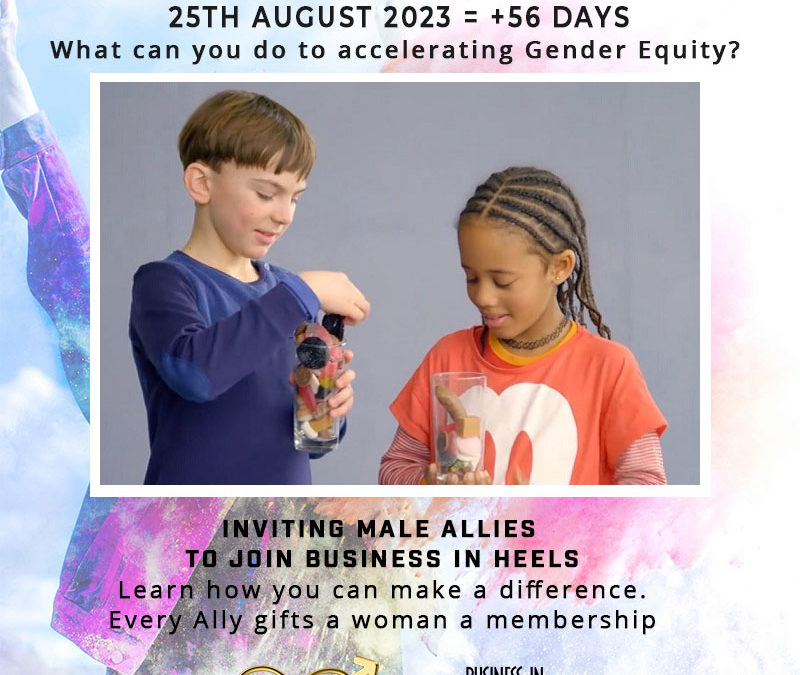
Equal Pay Day Quotes
Equal Pay Day was on August 25, 2023.
In 1969 Australian women earnt the right to equal pay for equal work. But something is still missing.
On average, women in Australian earn less than men. This is called the gender pay gap. Equal Pay Day marks the 56 additional days from the end of the financial year women must work to earn the same average pay.






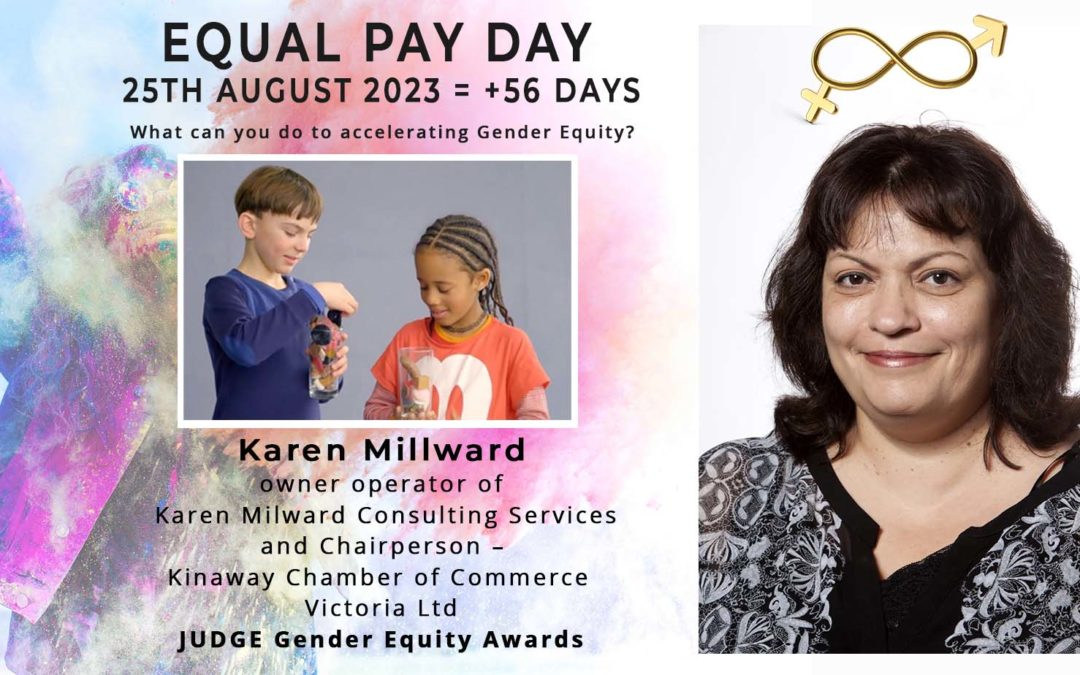
Equal Pay Day
Imagine a world where every person is valued for their contributions, regardless of their gender. A world where the principles of equality and fairness guide our actions, shaping a society that empowers everyone to thrive. This vision isn’t a distant dream – it’s an achievable reality, and it starts with us. As Equal Pay Day approaches on August 25, 2023, we have an opportunity to make a profound impact.
In 1969, Australian women celebrated a historic milestone as they secured the right to equal pay for equal work. But even today, a crucial piece of the puzzle remains missing. On average, women in Australia continue to earn less than their male counterparts, a persistent issue known as the gender pay gap. Equal Pay Day symbolizes the 56 extra days that women must work from the end of the financial year to earn the same average pay as men.
This year we are taking a stand to make a difference. So we asked the judges for the Gender Equity Awards what they think and this is the response from Karen Millward.
Karen Milward – owner operator of Karen Milward Consulting Services and Chairperson – Kinaway Chamber of Commerce Victoria Ltd
Karen’s message
It is so important for young girls and women globally to have the courage and confidence to ask for equal pay and a pay rise. For Aboriginal girls and women, we have the added layer of disadvantage.
We were lucky to be able to gain employment in the first instance in the 1970s but only for blue collar jobs and only after the 1967 referendum to give Aboriginal people the same rights as other Australians. The thought of working in an office, a bank or the corporate world was not heard of, or accepted by the broader Australian community – only domestic work was suitable.
It wasn’t until the 1980s that the Aboriginal community spoke out about having access to education, going to university and studying in any field available. Aboriginal people relied on government subsidised and sponsored education and employment programs to ensure our community had access to opportunities other Australians have enjoyed for many decades. Unfortunately, we still need Aboriginal employment programs and strategies to ensure that our community including Aboriginal women have the right to gain the skills, knowledge and expertise so that they can apply for other roles and senior and executive type roles.
Asking for a pay rise or being able to climb the ladder in any sector or industry didn’t present itself until the early 2000s.
My own experience – I have had jobs in mainstream industries and sectors both in identified and unidentified roles. Asking for a pay rise or another opportunity was not something I thought of a lot as I just felt lucky I had a job. I didn’t feel valued as a woman or an Aboriginal woman as I was often told I only got the job because I was Aboriginal not on merit – very hurtful as a young woman to experience that from other colleagues and employees. So I just kept my head down, didn’t cause any waves and did my job and I did it well!
It wasn’t until I started my own business in 2004 that I learned how to negotiate my rates for contracts. Although this was great I often got asked after submitting tenders – ‘can you do the same work as a non-Aboriginal consultancy’. I was like I just wrote this great tender didn’t I? We want to give you an opportunity as an Aboriginal owned and operated business because we can tick some boxes and we look good that we are helping your community out.
Some future clients also asked me if we give you this contract will you reduce your rates – at least we are giving you the work. This was from non-Aboriginal women in senior roles – so I was a bit shocked. It became pretty clear that I was not valued for my skills, knowledge and expertise it was a tick a box exercise. I didn’t confront this properly I just let it go and then things changed but then I had the same thing happen only 6 months ago.
I was select tendered with two other non-Aboriginal consultancies for some work and they chose one of the non-Aboriginal consultancies – they said my fees were too high. I asked for feedback and they said your fees were too high but I said I would negotiate if asked which was on the front page of my proposal and they said no.
After 15 years I put my rates up as people kept advising me too but I didn’t want to because I didn’t think I would get the work. If client’s just valued the work we do as Aboriginal women, it would go a long way to support our confidence and courage to speak up and out.
Now that I am older and have 19 years of consultancy experience under my belt, I encourage other Aboriginal and non-Aboriginal women not to put themselves in this position – I find the younger female generation are doing this better than when I was younger but more work needs to be done to support our women to thrive and be the best that they can be.
We shouldn’t just be breaking the glass ceiling we need to crack it wide open.

Breaking Gender Barriers
Grant Thornton is a world-leading organisation made up of independent assurance, tax and consulting advisors. Operating within the accounting industry, they have traditionally faced a lack of female participation, which notably declines as senior leaders move to the Partner level.
To drive change, the firm decided on a purposeful and proactive approach to their gender equity goals. Hollie Coleman, National Diversity and Inclusion Lead noted that the Gender Equity Action Plan is to achieve and maintain gender equity at all levels of the career structure within the firm by removing structural barriers to gender equality.
Although the talent pipeline is relatively balanced up to the Director level, the number of women advancing to Partner was disproportionate to their male colleagues. By listening to their people through targeted focus groups and direct feedback channels, they were able to understand the real and perceived barriers to advancing to Partner as a female at the firm. The focus is on driving cultural change, improving internal networks and visibility of female leaders, as well as raising awareness of gendered issues in the workplace more broadly.
Key initiatives
One of the initiatives under the Gender Equity Action Plan is an inclusive sponsorship program where each Sponsor supports a future leader through their career journey by providing active sponsorship, as well as (but distinct to) mentoring and coaching. The program focuses on upskilling sponsors first and foremost, while supporting and encouraging future leaders.
A Gender Equity Network (GEN) group was also set up to support women and gender diverse people by building a strong network of members and allies working together to create awareness and understanding, promote conscious inclusion, advocate for gender equity, and strengthen the pipeline of diverse talent for leadership roles. GEN was established on the basis that gender equity is everyone’s business – today one third of the members of GEN are male allies.
GEN launched GENerator Circles, which are “lean-in” groups of up to 12 individuals in local offices where women can meet to expand and strengthen internal networks, grow skills and confidence, and help each other achieve personal goals. This has helped participants discuss and strategise issues from imposter syndrome, and managing their mental load, to identifying their individual circle of advisors. Whatever the challenge, the circles provide support, empathy, understanding and a safe space to speak. For Daniela Baggio, a Manager in the Corporate Tax team, the initiative has been incredibly positive, “Having a dedicated way to channel interest in gender equity in the firm, and to access the support shared in these circles as part of my normal working day is unreal to me. I have personally benefited so much from being part of our GENerator circle and the deeper relationships I have formed has been helpful for day-to-day work activities.”
The importance of allyship
Other key barriers to women stepping into Partner level identified were the lack of informed and proactive allies, and the need to build networks to generate business and the team at Grant Thornton Australia has set about to systematically remove these barriers.
The concept of allyship was important to provide understanding, encouragement and support across the organisation. “Allyship at Work” training was piloted to build a greater understanding of gender equity issues, the role that privilege plays, and how men could be better allies at work. According to Jarrod Lean, Partner in Risk Consulting, the training has been very beneficial for him, ”The Allyship at Work training was thought provoking and engaging. I think everyone came out of it learning something, and most of all having more awareness of how to be a better ally. It has changed the way I approach interactions at work for the better, and I highly recommend other allies to attend future sessions.”
Business development initiatives
Demystifying business development is a key element of the Gender Equity Action Plan, with one of the major initiatives of the program being the internal and external networking opportunities. The Adelaide office has partnered with a local law firm and a Big 4 bank to provide networking opportunities for professional women to regularly meet, allowing the team to build local networks, form potential collaborations, and share cross-business referrals.
The Sydney Financial Advisory team have also set up a women’s network where they regularly meet to discuss topical issues or hear from guest speakers. Holly Stiles, FA Partner and the Executive Sponsor of GEN says, “We have seen very powerful results from our ’Women in Leadership series, including career progression, increased confidence and higher retention rates. Many women have commented that it has been incredibly helpful to discuss issues and to realise that others share similar challenges. The circles have provided a forum for women to share strategies to overcome barriers in their careers and a network of colleagues who support each other.”
The team at Grant Thornton Australia are proud of their work that aims to systematically remove the barriers holding women back. They are at the leading edge of action with their Inclusive Sponsor Program, Allyship program, GENerator Circles, business development support and networking opportunities. Other initiatives include 26 weeks of paid parental leave including superannuation on the 26-week unpaid portion, flexibility, support and resources for caregivers, and domestic & family violence support.
All these initiatives mean they are well on their way to achieving their gender equity goal: to create an inclusive environment where career aspirations can be realised regardless of gender, and where women and gender diverse people are as equally represented as men all the way through to Partner level.
If you would like to learn more about the other finalists then click this link.
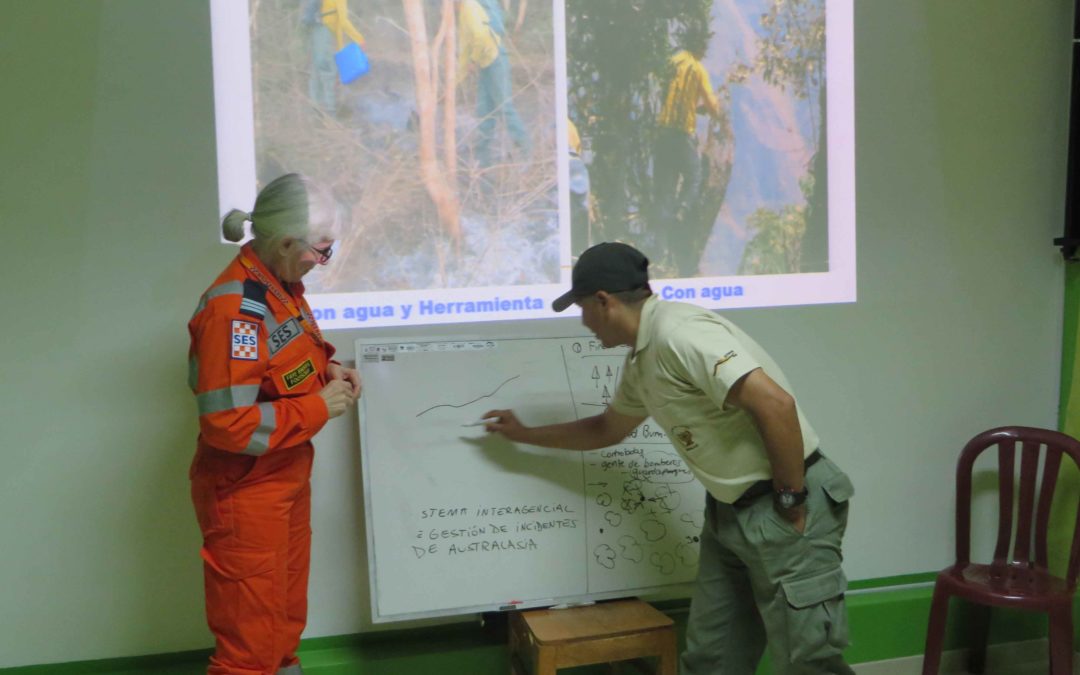
Balancing Gender for Optimal Emergency Response
Meet Dr Faye Bendrups, currently Vice Chair of National SES Volunteers Association. She is well known for her work to increase diversity and improve the workplace culture of the SES. As an emergency services frontline responder for over 17 years, she has served in multiple leadership roles and is proud to have supported numerous women into leadership roles at all levels. Her advice to women considering joining the emergency services is, “You can’t make the change if you are not in the room.”
Many would consider the SES a male-dominated organisation based on a hierarchical military structure. Today that is changing. Dr Bendrups says, “I have advocated for and strengthened the input of women and others from diverse backgrounds.”
It all starts with recruitment where they aim is to have a gender balance across the total force. A key initiative to enable this has been the presence of women on interviewing panels and showcasing them as roles models. Another is the emphasis on providing training to everyone, regardless of their gender. These days, no one is excluded for not having skills so both men and women who do not know how to use a chainsaw or drive a truck are trained to do exactly that.
Once engaged, all recruits are offered training opportunities in a safe and supported environment. Mentors are provided and all recruits are supported to succeed. For example, one young woman recently completed her Cert. 4 in Leadership and was encouraged to lead her unit. She had excelled as a self-starter and always delivered yet did not see her own potential. Through mentoring, she was encouraged to step up. Eventually, she became confident earning the respect of her team as a good leader. In her day job, she has embraced leadership too and her training in the SES was integral in giving her the confidence to go for a promotion interstate. She got that job and continues to progress her career. She is now leading multiple statewide divisions.
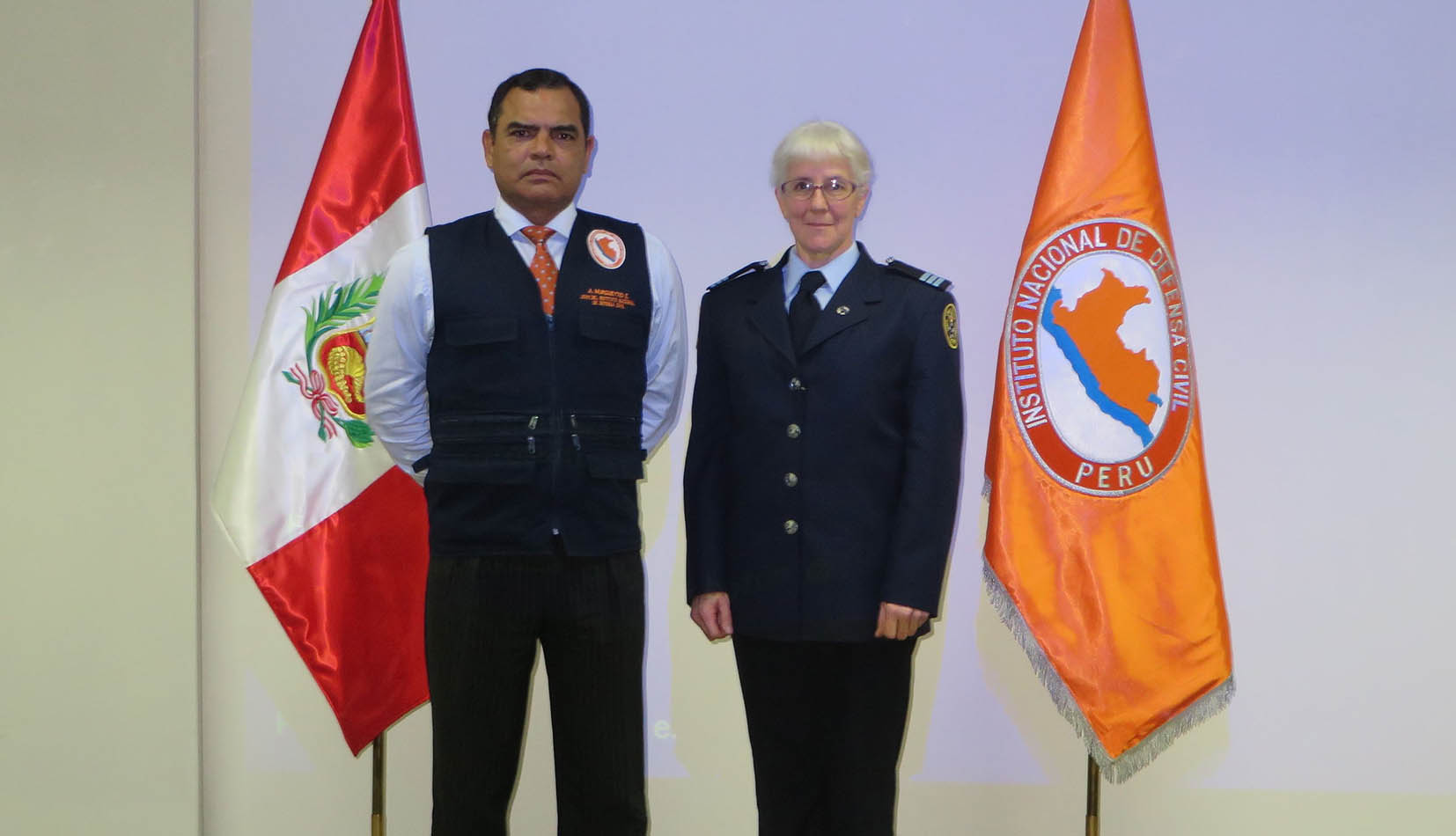
Dr Faye Bendrups meeting with General Murgueytio, Chief of Civil Defence, Peru
Dr Bendrups has been a truly inspirational leader. She is one of only a few women nationwide to be trained as an Operations Officer, a Safety Officer, and a Base Camp Manager for bushfire response operations. For her service during the 2019-2020 bushfires, she received the National Emergency Medal.
A particularly influential and controversial project she developed was a survey on Culture and Conduct in the SES. This revealed hundreds of cases of bullying, sexual harassment, coercive control, and other discriminatory behaviours. It led to a complete renovation of SES systems and a determination by the whole organisation to commit to organisational change, greater diversity, and an overhaul of cultural practices.
Being in the SES is not easy as it requires a time commitment of training one night every week as well as time on call. This is particularly challenging for single parents. One unit decided to overcome this hurdle to provide childcare. Whilst getting this approved wasn’t easy, they are proud to be able to provide this opportunity to single parents.
The benefits of inclusiveness were evident to Dr Bendrups when she was the recipient of an Emergency Services Foundation research grant and was seconded to the National Institute of Civil Defence, Lima, Peru. Peru suffers from 400 earthquakes a year and they have developed a unique approach to emergency response. Four times a year, the entire nation stops to participate in a drill. So when the alarm goes off to indicate the drill, everything stops (schools, businesses, even the cars driving along the roads) so everyone can get to their appropriate station. Bendrups found it an amazing experience as she realised emergencies are everyone’s problem and everyone has a part to play.
She has learnt from this experience and is looking to collaborate with councils to establish a series of community action plans in Australia. She recently cited the flood problems we had in Melbourne with the Maribyrnong River overflowing and flooding various homes and businesses as one typical situation in which the community could have played a bigger part. Although she quickly points out, she is not suggesting they all become SES volunteers. What she saw in Peru was the community doing simple, achievable tasks that freed up the emergency workers to concentrate on the complex and critical activities.
Today the SES promotes inclusiveness across the board including race, sexuality, and gender. A sign of this culture of tolerance and trust is that several gay and lesbian recruits have felt comfortable to “come out” with their teams. It is this confidence and trust that builds the team cohesion leading to better outcomes when under the pressure of an emergency situation.
To see the other finalists go to https://aij.dzr.mybluehost.me/website_40de3b07/
